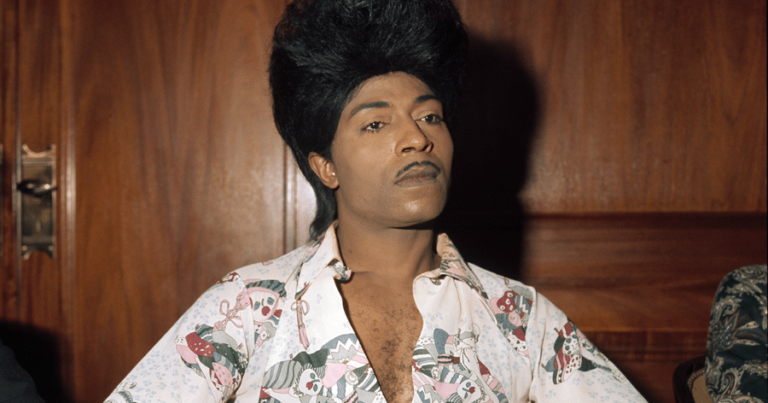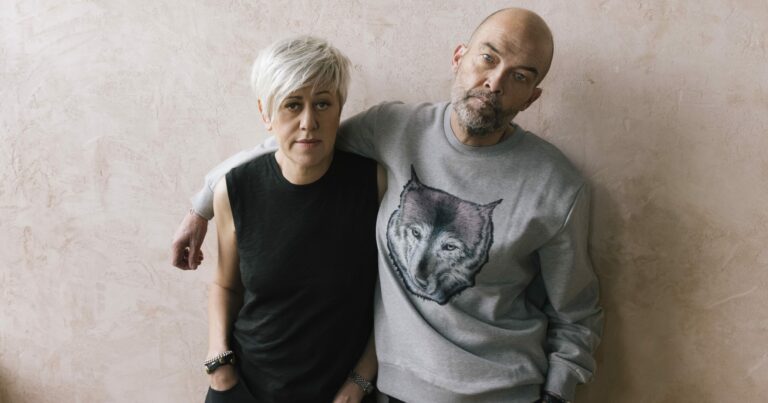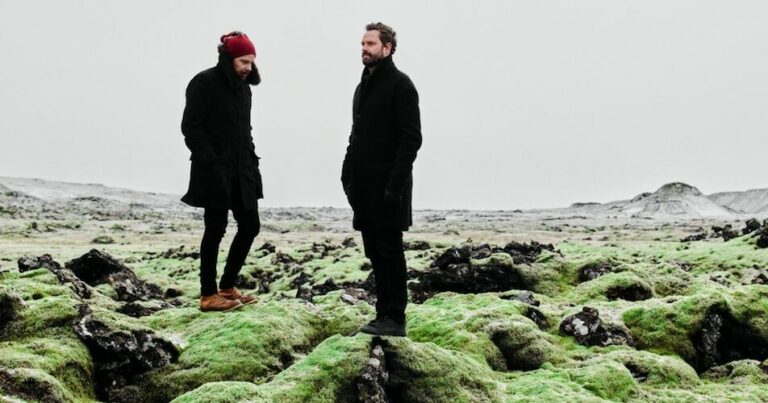It’s been a month since Closer Baby Closer came out – like Caroline Polachek’s ode to the terrifying, wonderful, and transformative possibilities of desire, a perfect Valentine’s Day 2023 release – and Savannah Brown is worried she won’t have an answer for what was going through her mind at the time of its conception. But she remembers the nightmares. Originally part of the fuel for a speculative fiction novel that has since been scrapped, they bleed into the heart of her new collection, an ambitious and darkly funny poem called ‘Nightmare Stations’. With it as the centerpiece, Closer Baby Closer – Brown’s third collection following 2020’s Sweetdark and the first on her recently established Doomsday Press – is split into three sections, each representing different stages in the pursuit, loss, and remembrance of intimacy. But she doesn’t necessarily draw a firm line between them, or between physical and digital intimacy, imbuing each part with elements of humour, vulnerability, and horror, often mixed in the same breath and gasping for pleasure – or better, some semblance of understanding.
By turns piercing, morbid, feverish, and playful, Closer Baby Closer is shaped by the chaos of separate lives colliding into one another, the existential questions that loom beyond the smallest of moments. Ungraspable as they may seem, Brown is growing more aware of the nuances of poetic language and intentional about where to direct her attention, which is outside the self and toward the shared aspects of human experience. One poem is called ‘Wilhem yawp’, a title that combines the Wilhem scream and Walt Whitman’s ‘barbaric yawp’; many people advised her to change it, she notes, but she “liked the idea of a yawp so common it became a joke.” We’re all in on it, and it scares us, but it also means we’re running in the same orbit. “My friends I’ll use my intelligence/ to love you better,” she writes on ‘Top comment’. “Young geniuses/ Accidental astronauts/ I’ll get to the place where you are.”
We caught up with Savannah Brown to talk about the origins of Closer Baby Closer, understanding intimacy, nightmares and miracles, and more.
What’s your headspace like with Closer Baby Closer being out and having some space from it?
It’s crazy how fast you feel removed from projects after they come out. I’m very much in full swing of the next things. That being said, it doesn’t come out until October in the US, so I still have to keep it a bit at the forefront of my mind. But I feel very warmly towards it, which hasn’t been the case for other projects that I’ve moved on from. I have a really bad habit of finishing something and then being fully embarrassed by it – not even feel indifferent about it, but actively hate it. I finished writing it a year and a bit ago now, but it still feels resonant. I feel like I did a good job, which is nice. [laughs] I think it’s really honest, and I think it’s hard to get angry at something that is so honest.
In your video ‘SO MANY SMALL LIVES FIT INSIDE THE BIG ONE’, you mention rewatching the ‘forming real human connections’ video and how, on a basic level, you’re still trying to express the same feelings, but the questions around them have become much broader and more complicated. It seems like a lot of those questions were then fed into Closer Baby Closer.
Yeah, for sure. At least for me, it’s become apparent that my interests stay the same, but my ability to articulate nuances of them improves. So you start asking generally, I don’t know, can we really understand one another, but then it branches off in different directions. I’ve been preoccupied with this since I was a child, so like, I don’t know how this will pan out once the oeuvre is finished. [laughs] Like, will this be my gossamer thread period or whatever? But yeah, that’s definitely something I was preoccupied with that at the time. The poetry collections especially always end up being whatever the obsession was at at that particular moment. People will ask how you put a collection together, if you go out with the intention of making it about so and so, but it truly is like, I will just think about something for like two years. [laughs] I’m not trying to be like: This is my theme. It’s just literally what I am thinking about.
I guess it’s hard to conceptualize it from childhood until now, but from early 2020 to the publication of Closer Baby Closer, do you have a clear idea of how those ideas around human connection developed?
That’s a huge question. I don’t know how much of a therapy session we want to make this, but from when I was really really young, I found it incredibly difficult to connect with people. Not to be super trendy, but it’s like a later-in-life autism diagnosis sort of situation, and that answered a lot of questions for me. Concerns that I had about myself as a person that I thought fundamental flaws were all summed up neatly, and that was nice. I tend to be really obsessed with things I’m scared of, and also things that I’m bad at, so that was like the ultimate meeting point of those two things, where I’m so bad at engaging with people, but I find them so interesting, and I like to be around them – I’m not sure that’s true. I do, sometimes. But I’m very curious about them, and I like seeing how it works. It’s always been very interesting to me, but I felt really closed off from it. I think I’m older and feeling a lot more settled in myself these days, so a lot of the fear is sort of ebbing. It’s allowed me to actually, like, engage with people more, and as you do that, obviously you have more and more questions.
To tie this to the relationship between Sweetdark and Closer Baby Closer, if the first highlighted intimate moments against an apocalyptic backdrop, I feel like the new collection mostly focuses on the problem of intimacy itself. What new perspectives did that open up in your work, and were you surprised by the different shades of intimacy that you discovered and felt the need to express through poetry?
The way that translated in Sweetdark, having the apocalyptic backdrop, as you say, it was almost like I wanted there to be a timelessness to it, whereas Closer Baby Coser feels very much of its time. I think that’s the main difference for me personally. But poetry itself as the translation of these feelings – I’ve been thinking about this a lot recently. I think one of the main and very important reasons I’m a poet is because I want everyone to, like, very clearly understand what I’m trying to say. From a young age, I was like, this is the clearest I could possibly make it. It’s ironic, because I don’t think a lot of people defend poetry in its clarity. [laughs] I’m not sure that’s the first thing that comes to everyone’s mind. But I was like: If I can harness this tool so, so well, then everyone will have to understand what I’m talking about. And I still feel that very much.
Were you working on prose while writing any of these poems?
Yes. So, there’s a bit of lore here. [laughs] In early 2021, I was seized by an almost religious fervor and wrote this speculative horror novel in three weeks. I was obsessed with it. I would wake up and write like 5,000 words, and I was thinking about it all the time. It was about a couple who undergoes experimental relationship therapy that’s meant to make them feel like they’re in the same body. I thought it was great, and I sent it to my agent and he was not as charmed by it as I was. Which is so funny in retrospect, and also bless him, because it was really – firstly, not the sort of thing he represents at all, definitely not the sort of thing he reads. I was reading a lot of literature about snuff films. [laughs] It was just really out there. I don’t think it will ever see the light of day, but I really enjoyed writing it. I sort of ended up breaking it down and repurposing it for a lot of the middle section of Closer Baby Closer.
‘Nightmare Stations’?
Yeah. So that is sort of that’s final resting place. But it was the only other fiction I was working on. And it wasn’t even really during – that was sort of the catalyst for this collection.
I was going to ask what it was like switching between fiction and something more intensely personal, but it sounds more like you ended up channeling one into the other.
Yeah, I don’t like switching. I was writing one of the novels [The Truth About Keeping Secrets] while I was writing Sweetdark, and I did not like switching between the two. I feel like poetry and prose engage different parts of your brain. Story, to me, is so mechanical, and I’m not as good at the machinations of the thing as I am at the, like, I’m feeling a way.
To what extent do you feel like organizing Closer Baby Closer was a delicate or challenging process?
I love organizing a collection, I think it’s a lot of fun. I especially like nailing down what the first and last poems are, that’s always a real treat for me. With Sweetdark, too, it was never a real heartbreak. It came quite easily, I think. It’s almost chronological. So, the context is, I started writing the collection because I was in a relationship – I was so, so very in love with this person, and it was ruining my life. That was the seed it started from. Over the course of writing the collection, I started antidepressants, I started therapy, I stopped going to therapy, I stayed on the antidepressants, and me and the person the book is about broke up. So I was like, Well, this needs to add some flavor to it, surely.
The first part, I think, is the joys – if you could call them that – of intimacy, which is so hilarious because it’s not a particularly joyful collection of poems, but in my head I’m like, there’s joy in the terror. The middle section is like: This is the worst that’s ever happened to anyone. This curse of existence that I have to give any part of myself away to anyone, ever, is absolutely dreadful. And the third part is the one where it’s very much of the time. It’s a lot lighter. It’s a lot funnier, I think, than the first two parts. It was the joys of intimacy, the terrors of intimacy, and then the last part was like, I’m just gonna go out on the town. [laughs] Like, I’ve made my two points, that it’s beautiful and terrible, and now I’m going to go drink some alcohol.
It’s more extroverted, I feel like.
Yeah, I would agree. It does feel like a post-breakup thing, right? It’s like, I’ve gone through this emotional tsunami, and now I’m just gonna have a hot girl summer or whatever. That does feel like the progression.
You said you’re somewhat removed from it, but do you have a vivid memory of working on ‘Nightmare Stations’?
I am removed from it, but if any part of this is still happening in my life, that is 100% ‘Nightmare Stations’. [laughs] Truly, I kept having these horrible nightmares – I would wake up probably every other night having seen the most horrifying thing I’ve ever seen in my life, and then just continuing to go on with my day. The first part of the poem is like, everyone’s dreams are boring, right? It’s so boring to hear about – it’s like hearing about other people’s kids, like, “That’s really great for you.” Or other people’s dates – you’re like, “Awesome, I’m sure that was really crazy, but I don’t actually give a shit.” But I do genuinely like hearing about people’s nightmares, because I’m interested in people’s obsessions and fears very much. I think it says a lot about a person, or maybe I’m just like a weird, creepy voyeur. Either way, I think they’re interesting.
It was just my deepest fears televised for me every single night for months and months and months, and it was fully driving me crazy. Like I said, the seed of it came from the spec work, which was also called Closer Baby Closer, and it was that in conjunction with – do you know what numbers stations are? During the war, it’s these radio stations that would play 24/7 a sequence of numbers, and it was used to transmit messages. I liked the idea of something like that, but it was just playing all of my deranged nightmares, all the time, through poetry. I thought that was really funny.
While I was writing this, I discovered who is now one of my favorite poets, Hera Lindsay Bird. She showed me – not what I was allowed to do, but what was possible in a way I hadn’t even considered before. One of the great joys of writing this collection specifically has been that I feel I’ve really gotten a good sense of my voice and the tone of my work, and how I want people to feel while they’re either reading or listening to it. I think every poem should have a joke in it, probably – I don’t know if that’s true, but I think humour is such an important tool, especially in poetry, which is a medium that is lambasted for how deeply sincere it is. Comedy and humor are such a good way to have people let their guard down a bit and actually get on the level with you and actually listen to what you have to say. I have been to poetry readings and open mic nights that were for nobody – we all went to them and people read and stuff, but they weren’t for anybody.
I was just talking about this with one of my friends who does stand-up sometimes. He was talking about how, if you’re doing stand-up comedy, you need to get on a level with the audience, and you need to say things that resonate with them, or else you embarrass yourself and it’s not fun for anyone. Whereas with poetry, it’s a lot more solipsistic than that, because people will literally pretend that they know what you’re talking about in order to keep the peace. Making sure you’re on a level with people and making sure they know what you’re talking about – because otherwise, what are we doing? Otherwise I have no idea what the point of any of this is, if you and I cannot understand each other.
It makes it easier to connect when there’s an element of humour, which I do feel is becoming more central to your work. But I don’t feel like most of your poems end with a punchline – there’s maybe a joke or two in between, but you stray from ending things with a joke.
Because although I think that’s important, I don’t think that’s the most important bit of it. I did an interview where I said it’s like when your boyfriend yawns, and you go to put your finger in his mouth. Except the yawn is one of the jokes in my poems, and my finger is the little zinger of a realization at the end. [laughs]
One of the words that runs through Closer Baby Closer is “miracles.” There’s this question on ‘Perspective’ – “What miracle do we serve?” – that rises as you zoom out of one particular morning. What weight does that term hold for you?
I’m not sure we can get too much into it, but I was raised Catholic. I think all religious imagery or iconography really strikes a chord in me – as we’re discovering now, I think that’s true of a lot of 20 to 28-year-old women raised in the Midwest. In that poem specifically, the watered-down version of it is: We’re here, and we’re in love, and that’s wonderful, but like, what are we doing? And I think that’s really the crux of it – the whole thing’s the miracle, but what are we doing to it? Why have we found one another here? Truly, what is going on? Why are we going to the pub, you know? [laughs] That’s a good question, I’m sorry I don’t have a better answer to it right now.
It reminds me of that other line [from ‘Seduction theory’]: “Their aliveness dazzling with what is almost purpose.” It feels like something we’re always reaching for – like, almost is the important word here.
You very kindly wrote that piece about Sweetdark, and your last observation is so wonderful and something that I really hadn’t even thought about. It just gave it such an incredible weight, and I was thinking about that while you were talking just now. But I think maybe that’s an aspect of my personality, where I will be enjoying myself, and then I’ll be like, but why, you know? It’s sort of looking for reason in what has none, and I’m not sure that that ever stops. It’s funny that those two poems end similarly, because I think that’s what everything I write is about, actually, is being like: This is so wonderful, but why – and also, why do I deserve to experience it? And: How do I get to not die?
How has working on this collection affected or shaded the poems you’re writing now?
It has made me very bored of myself. [laughs] Is that good? Especially Sweetdark and Closer Baby Closer, and even my work outside of those collections, is so confessional, and it’s been so about me, and I’m feeling really over that at the moment. I’m feeling like the navel-gazing needs to come to an end, or like I’ve reached the event horizon of, at least at this point in my life, what my internal world looks like, and I’m ready to go outside of myself instead.
This interview has been edited and condensed for clarity and length.
Savannah Brown’s Closer Baby Closer is out now.










